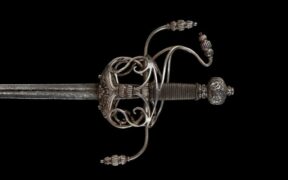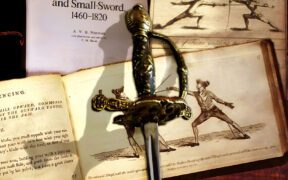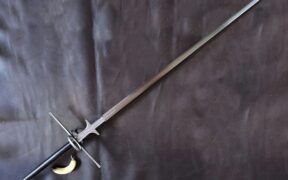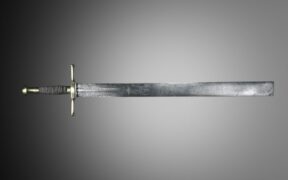Our content features commercial links to our products, committed to transparent, unbiased, and informed editorial recommendations. Learn More
The Musketeer Sword: The Secondary Weapon of the Musketeers
NO AI USED This Article has been written and edited by our team with no help of the AI
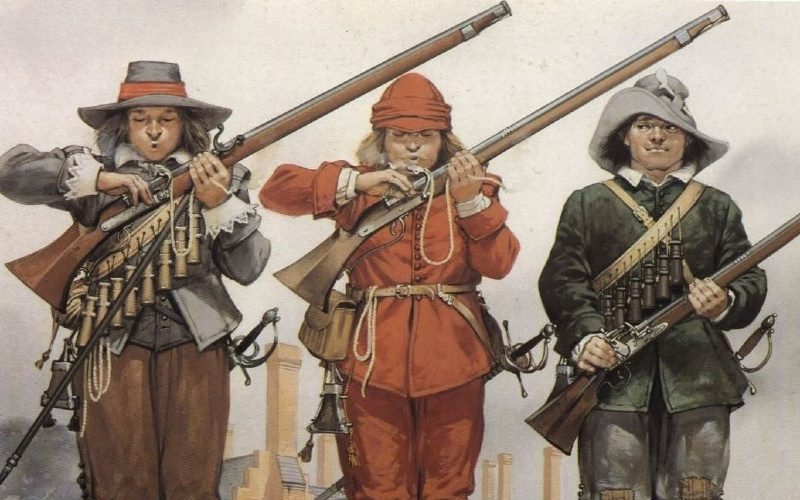
The Musketeer sword is a type of sword with one or two sharp edges. Real soldiers used it in battles along with their guns.
It’s also famous because of the brave sword fighters in “The Three Musketeers,” a popular book by Alexandre Dumas.
This article will tell you about Musketeer swords – the real ones and those in the novel. We’ll explore the types used by real Musketeers and their features.
MAIN TAKEAWAYS
- Musketeers used a variety of swords, including Rapiers and Sabers, as secondary weapons when muskets were impractical.
- These swords were symbols of status and practical tools for close-quarter combat.
- The portrayal of Musketeers in Alexandre Dumas’s novel differs from historical reality, where swords were not their primary weapons.
What is a Musketeer?
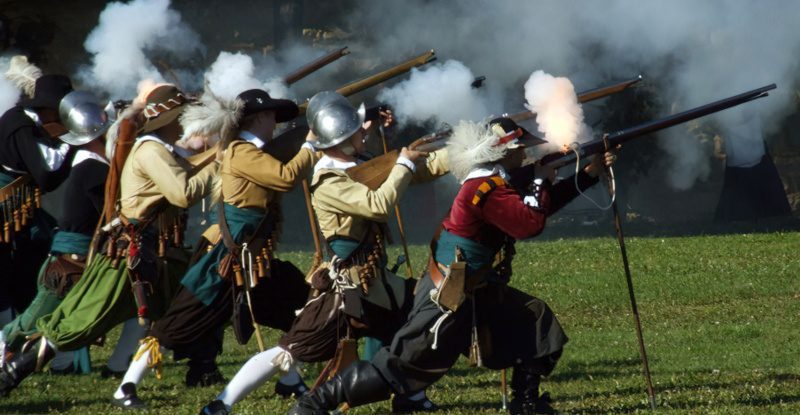
A Musketeer was a soldier who mainly used a musket. They also had a halberd or a sword as a backup weapon. Musketeers were common in early wars around the world, from China to Africa, but they started in Europe.
The word “Musketeer” comes from the French “Mousquetaire,” meaning a soldier with a musket. They were first formed in 1622 as the King’s Guard. They wore a famous blue uniform with a cross and a fleur-de-lys, a French symbol.
Musketeers were a big part of European armies from the 1600s to the 1800s. Later, riflemen with rifles replaced them.
Types of Swords used by the Musketeers
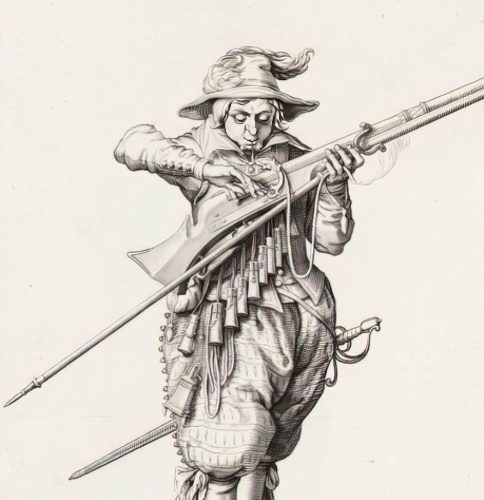
The most iconic weapon used by the Musketeers were their muskets, so there is no real definition of a Musketeer sword, per se.
While that is the case, whether they are seen in active battles or not, they are always seen carrying a backup sword.
They came into use during melee and close-quarter fights when the musket took too long to reload to be reliably used
Here we shall list different swords used and seen in many historical paintings, archives, and documents on European Musketeers.
1. Side Sword

The Side Sword was the most common backup weapon for Musketeers. It’s a type of sword that was popular in Europe before Musketeers were official soldiers. Both ordinary people and nobles used it a lot, so it was easily accepted.
This sword was good for close fights. It wasn’t too heavy or long, making it great for quick slashing moves. It was more useful than the slim Rapier, which was better for poking attacks.
2. Rapier
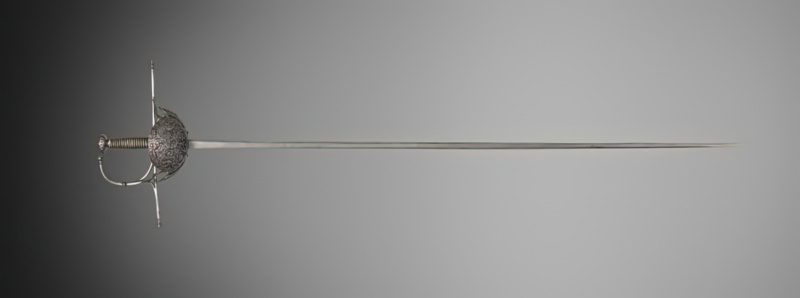
The Rapier, a long and thin sword, is often linked to the Musketeers. It was common in duels and seen as a symbol of status. The Rapier was great for thrusting and stabbing.
But, its long size made it hard to carry around. Also, for Musketeers in cavalry units, stabbing attacks were not very helpful.
3. Half-Rapier or Musketeer Rapier
The Half-Rapier, a Musketeer sword, looks like a regular Rapier but with a different blade. This blade was shorter, wider, and heavier.
A wider blade meant it could be sharp on both sides, great for slashing enemies. Its shorter length made it easier to carry and use in fights.
4. Hanger Sword

The Hanger sword was a short, light sword carried by many European soldiers, including Musketeers. It was common in Western Europe.
This simple military shortsword was easy to carry, especially on long marches. Its curved blade made it good for slashing strikes.
5. Saber

Curved European sabers, influenced from the east by Poland and Hungarian Sabres, were also in the arsenal of weapons for the musketeers.
A Musketeer saber can mean any type of saber with a blade length that is not incredibly long so that it can be used as a one-handed thrusting and slashing weapon.
6. Smallsword

The Musketeer Smallsword evolved directly from the longer and thin Rapier.
This weaponry was used for military efforts as well, but it was primarily a light sword of social status that the musketeers enjoyed for a period of time.
It is slightly shorter than the Rapier and features a D knuckle guard with many decorations on it.
7. Main-gauche
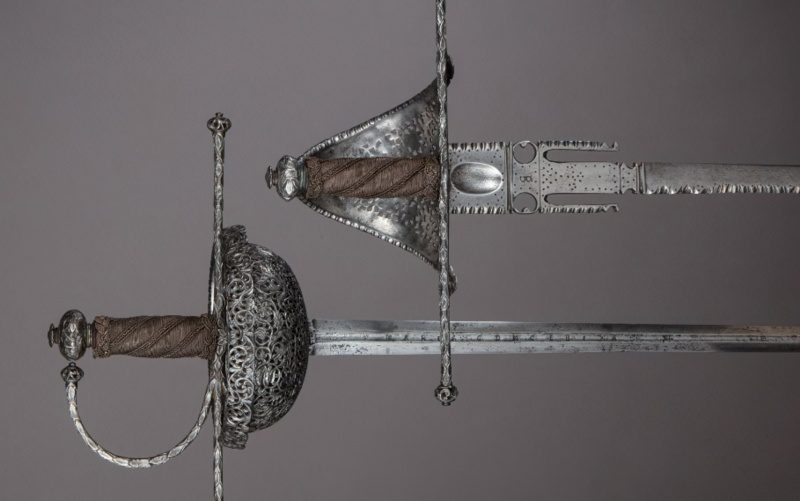
The Musketeers were known for having a dagger as their third weapon of choice.
Sometimes, Musketeers used a simple dagger like today’s bayonet. But as seen in Dumas’s novel, they also used fancier weapons like the Main-gauche dagger or short sword. These looked more intricate and prestigious.
Use of the Musketeer Swords
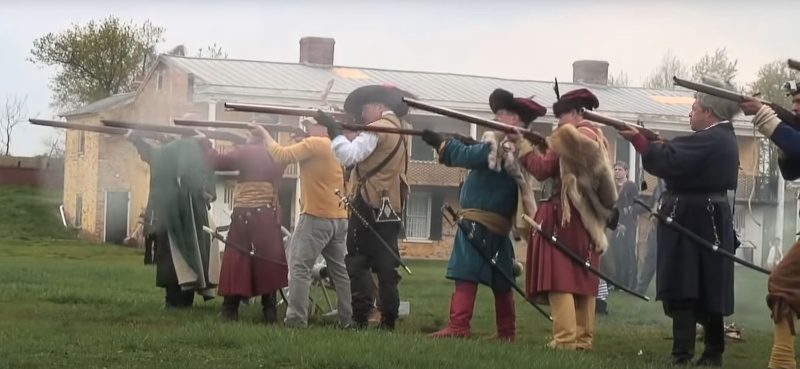
The three pieces of weaponry that the Musketeers had were the musket, sword, and dagger. That explains the secondary and backup use of the Musketeer swords.
They are used as a one-handed weapon that can be short or long but is very light to use and offer quick slashing and thrusting strikes.
In Battle
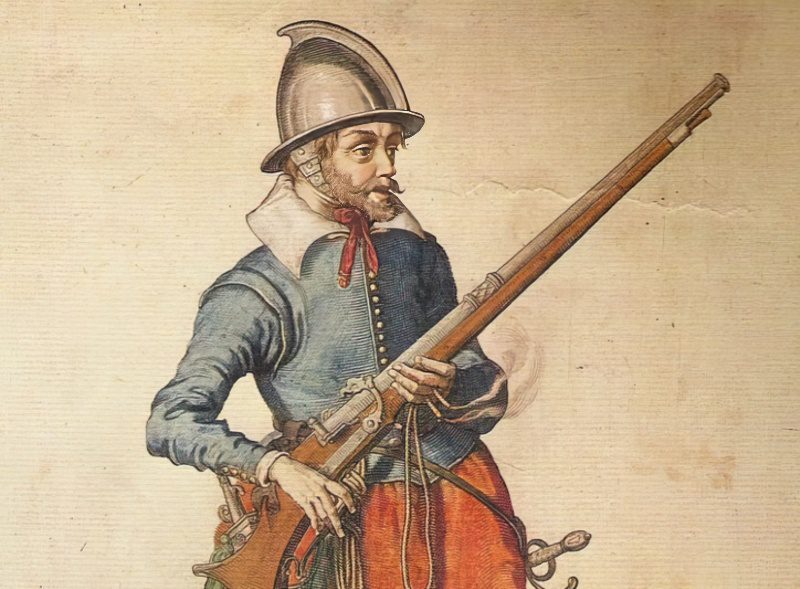
Muskets were good for shooting far away, but most fights happened up close. That’s why Musketeer swords were so important, especially when it took a long time to reload muskets.
French Musketeers, both on foot and on horseback, used swords and muskets.
Muskets, early rifles, were slow to fire and reload and not very accurate. They were heavy, sometimes over 22 lbs (10 kg), and could be 6 feet (2 meters) long.
Musketeers had to buy their own gear, including horses, clothes, and weapons. Swords were cheaper than muskets, so many Musketeers chose swords.
That’s why you see them with swords, even though they’re named after muskets.
Swords as Decor
Over time, as rifles got better, swords became more for show. They showed status, rank, or family. Now, they’re mostly for fencing, duels, or decoration.
Today, these swords are popular in cosplay and LARP, especially the cup-hilt rapier from “The Three Musketeers”. There are also replicas of other historic Musketeer swords.
What was the Sword used by the Three Musketeers?
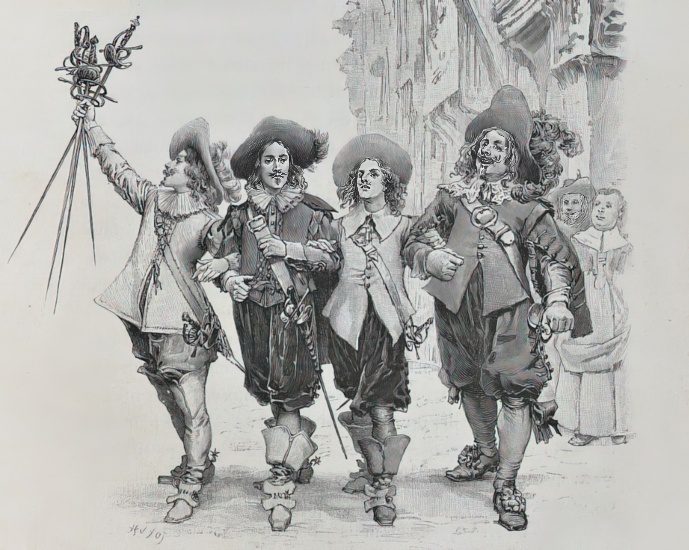
The Rapier sword is famous because of “The Three Musketeers,” a well-known French book. This story, written by Alexandre Dumas, is about brave swordsmen like D’Artagnan, Athos, Aramis, and Porthos. They fight for justice with their swords.
Many people think musketeers mainly used the Rapier sword in battles because of this book. But that’s not true.
Dumas liked exciting stories about daring heroes. He wanted to write about thrilling sword fights and adventures. That’s why he chose the Rapier for his characters.
